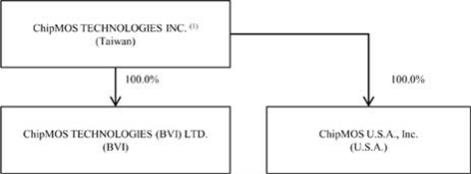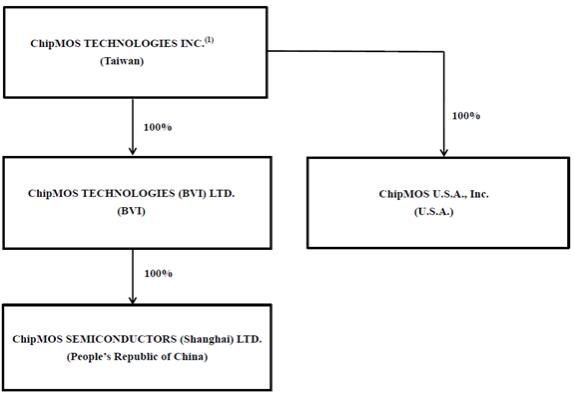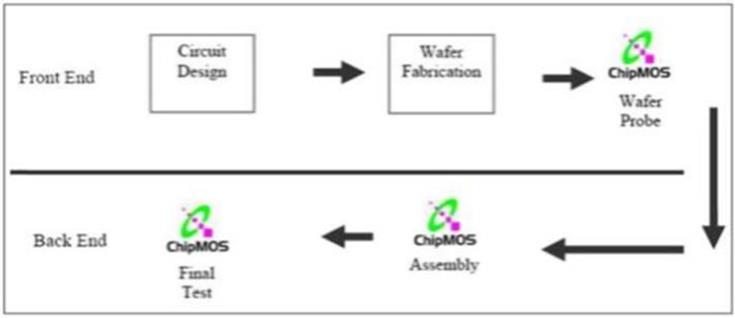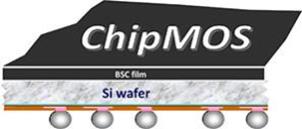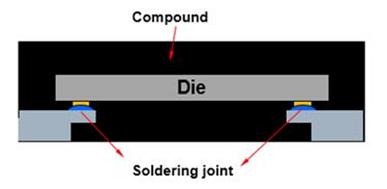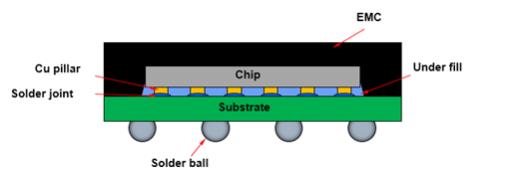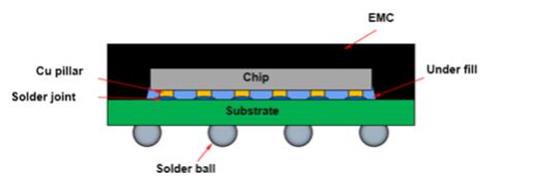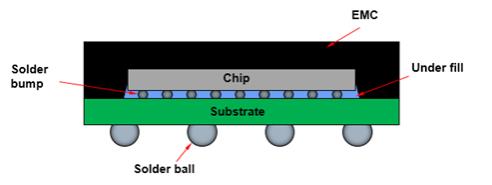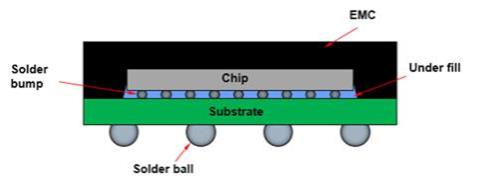ChipMOS TECHNOLOGIES INC. AND SUBSIDIARIES
Notes to the Consolidated Financial Statements (Continued)
December 31, 2016, 2017, 2018 and 20182019
| 2. | Basis of preparation of financial statements and principal accounting policies (continued) |
| | t)cc) | ResearchCritical accounting judgments, estimates and development costs
|
Research and development costs that do not meet the criteria of internally generated intangible assets of IAS 38 “Intangible Assets” are expensed in the period in which it is incurred.
Borrowing costs directly attributable to the acquisition, construction or production of qualifying assets, which are assets that necessarily take a substantial period of time to get ready for their intended use or sale, are added to the cost of those assets, until such time as the assets are substantially ready for their intended use or sale. All other borrowing costs are charged to the consolidated statements of comprehensive income in the period in which they are incurred.
| v) | Pension and other post-employment benefits
|
The Group operates defined contribution and defined benefit plans in the ROC. For defined contribution retirement benefit plans, payments to the benefit plan are recognized as an expense when the employees have rendered service entitling them to the contribution. For defined benefit retirement plans, the cost of providing benefit is recognized based on actuarial calculations.
For defined benefit retirement benefit plans, the cost of providing benefits is determined using the Projected Unit Credit Method, with actuarial valuations being carried out at the year end. Remeasurements are recognized in other comprehensive income in the period which they incur. Past service costs are recognized in the consolidated statements of comprehensive income on the earlier of the date of the plan amendment or curtailment, and the date that the Group recognizes restructuring-related costs. Net interest is calculated by applying the discount rate to the net defined benefit liability or asset. The Group recognizes i) service costs comprising current service costs, past service costs, gains and losses on curtailments andnon-routine settlements, and ii) net interest expense or income, under cost of revenue, research and development expenses, sales and marketing expenses and general and administrative expenses in the consolidated statements of comprehensive income.
Employee entitlements to annual leave are recognized when they accrue to employees. An accrual is made for the estimated liability for annual leave as a result of services rendered by employees up to the end of the reporting period.
Restricted shares
Restricted shares issued to employees are measured at the fair value of the equity instruments granted at the grant date, and are recognized as compensation cost over the vesting period.
For restricted shares where those shares do not restrict distribution of dividends to employees and employees are not required to return the dividends received if they resign during the vesting period, the Group recognizes the fair value of the dividends received by the employees who are expected to resign during the vesting period as compensation cost at the date of dividends declared.
ChipMOS TECHNOLOGIES INC. AND SUBSIDIARIES
Notes to the Consolidated Financial Statements (Continued)
December 31, 2016, 2017 and 2018
2. | Basiskey sources of preparation of financial statements and principal accounting policiesassumption uncertainty (continued)
|
| w) | Share-based payments (continued)
|
For restricted shares where employees do not need to pay to acquire those shares, if the employees who resign during the vesting period, the Group will recover and retire those shares at no cost.
Income tax represents the sum of current and deferred tax. Income tax relating to items recognized outside profit or loss is recognized outside profit or loss, either in other comprehensive income or directly in equity.
Current tax assets and liabilities are measured at the amount expected to be recovered from or paid to the taxation authorities, based on tax rates (and tax laws) that have been enacted or substantively enacted by the end of the reporting period, taking into consideration interpretations and practices prevailing in the countries in which the Group operates.
Deferred tax is provided, using the liability method, on all temporary differences at the end of the reporting period between the tax bases of assets and liabilities and their carrying amounts for financial reporting purposes.
Deferred tax liabilities are recognized for all taxable temporary differences, except:
when the deferred tax liability arises from the initial recognition of goodwill or an asset or liability in a transaction that is not a business combination and, at the time of the transaction, affects neither the accounting profit nor taxable profit or loss; and
in respect of taxable temporary differences associated with investments in subsidiaries, associates and joint ventures, when the timing of the reversal of the temporary differences can be controlled and it is probable that the temporary differences will not reverse in the foreseeable future.
Deferred tax assets are recognized for all deductible temporary differences, the carryforward of unused tax credits and any unused tax losses. Deferred tax assets are recognized to the extent that it is probable that taxable profits will be available against which deductible temporary differences, the carryforward of unused tax credits and unused tax losses can be utilized, except:
when the deferred tax asset relating to the deductible temporary differences arises from the initial recognition of an asset or liability in a transaction that is not a business combination and, at the time of the transaction, affects neither the accounting profit nor taxable profit or loss; and
in respect of deductible temporary differences associated with investments in subsidiaries, associates and joint ventures, deferred tax assets are only recognized to the extent that it is probable that the temporary differences will reverse in the foreseeable future and taxable profit will be available against which the temporary differences can be utilized.
ChipMOS TECHNOLOGIES INC. AND SUBSIDIARIES
Notes to the Consolidated Financial Statements (Continued)
December 31, 2016, 2017 and 2018
2. | Basis of preparation of financial statements and principal accounting policies (continued)
|
The carrying amount of deferred tax assets is reviewed at the end of each reporting period and reduced to the extent that it is no longer probable that sufficient taxable profit will be available to allow all or part of the deferred tax asset to be utilized. Unrecognized deferred tax assets are reassessed at the end of each reporting period and are recognized to the extent that it has become probable that sufficient taxable profit will be available to allow all or part of the deferred tax asset to be recovered.
Deferred tax is calculated, without discounting, at the tax rates that are expected to apply in the period when the asset is realized or the liability is settled, based on the tax rates (and tax laws) that have been enacted or substantively enacted by the end of the reporting period.
Current income tax assets and liabilities are offset and the net amount reported in the statements of financial position when there is a legally enforceable right to offset the recognized amounts and there is an intention to settle on a net basis or realize the asset and settle the liability simultaneously.
If a change in tax rate is enacted or substantively enacted, the Group recognizes the effect of the change immediately in the period in which the change occurs. The effect of the change on items recognized outside profit or loss is recognized in other comprehensive income or equity while the effect of the change on items recognized in profit or loss is recognized in profit or loss.
| y) | Cash and cash equivalents
|
Cash and cash equivalents comprise cash on hand and demand deposits, and short-term highly liquid investments which are readily convertible into known amounts of cash, are subject to an insignificant risk of changes in value, and have a short maturity of generally within 3 months when acquired.
| | (a) | A person, or a close memberCritical judgments in applying the Group’s accounting policies
|
Provisions for deficiency compensation
The Group is primarily engaged in the research, development, manufacturing, sale, and assembly and testing of high-integration and high-precision integrated circuits. In any cases where deficiencies in the assembly and testing services arise, the Group has to clarify the reason for deficiencies and attribute of responsibilities. The Group follows the guidance of IAS 37 “Provisions, Contingent Liabilities and Contingent Assets” to determine warranty provisions. Since the timing and amount of these warranties are based on assumptions and estimates it requires management to make critical judgments.
| (b) | Critical accounting estimates and assumptions |
Revenue recognition
| i) | The Group recognizes revenue from services for assembly, LCDD and Bumping based on the progress towards completion of that person’s family, is relatedperformance obligation during the service period. The Group estimates total expected input costs based on historical experience and measures the progress towards completion by the actual input costs relative to the Group if that person:total expected input costs. |
| | (i) | has control or joint control over the Group;
|
| (ii) | has significant influence over the Group; or
|
| (iii) | is a member of key management personnel of the Group or the Group’s parent.
|
| (b) | An entity is related to the Group if any of the following conditions applies:
|
| (i)ii) | The entityGroup estimates sales refund liabilities for sales allowance based on historical results and other known factors. Provisions for such liabilities are recorded as a deduction to revenues when the sales are recognized. The Group are membersreassesses the reasonableness of the same group.estimates of discounts and returns periodically. |
| (ii) | One entity is an associate or joint venture of the other entity (or an associate or joint venture of a member of a group of which the other entity is a member).
|
| (iii) | The entity and the Group are joint ventures of the same third party.
|
| (iv) | One entity is a joint venture of a third entity and the other entity is an associate of the third entity.
|
ChipMOS TECHNOLOGIES INC. AND SUBSIDIARIES
Notes to the Consolidated Financial Statements (Continued)
December 31, 2016, 2017 and 2018
2. | Basis of preparation of financial statements and principal accounting policies (continued)
|
| z) | Related parties (continued)
|
| (v) | The entity is a post-employment benefit plan for the benefit of employees of either the Group or an entity related to the Group.
|
| (vi) | The entity is controlled or jointly controlled by a person identified in (a).
|
| (vii) | A person identified in (a)(i) has significant influence over the entity or is a member of the key management personnel of the entity (or of a parent of the entity).
|
A subsidiary is an entity (including a structured entity) controlled by the Company. Control is achieved when the Group is exposed, or has rights, to variable returns from its involvement with the investee and has the ability to affect those returns through its power over the investee (i.e., existing rights that give the Group the current ability to direct the relevant activities of the investee).
When the Company has, directly or indirectly, less than a majority of the voting or similar rights of an investee, the Group considers all relevant facts and circumstances in assessing whether it has power over an investee, including:
the contractual arrangement with the other vote holders of the investee;
rights arising from other contractual arrangements; and
the Group’s voting rights and potential voting rights
The Company’s share of its subsidiaries’ post-acquisition profits or losses is recognized in profit or loss, and its share of post-acquisition movements in other comprehensive income is recognized in other comprehensive income. When the Company’s share of losses in a subsidiary equals or exceeds its interest in the subsidiary, the Company continues to recognize its share in the subsidiary’s loss proportionately.
Changes in a parent’s ownership interest in a subsidiary that do not result in the parent losing control of the subsidiary (transactions withnon-controlling interests) are accounted for as equity transactions, i.e. transactions with owners in their capacity as owner. Any difference between the amount by which thenon-controlling interests are adjusted and the fair value of the consideration paid or received is recognized directly in equity.
| bb) | Fair value measurement
|
The Group measures its accrued pension cost at fair value at the end of each reporting period. Fair value is the price that would be received to sell an asset or paid to transfer a liability in an orderly transaction between market participants at the measurement date. The fair value measurement is based on the presumption that the transaction to sell the asset or transfer the liability takes place either in the principal market for the asset or liability, or in the absence of a principal market, in the most advantageous market for the asset or liability. The principal or the most advantageous market must be accessible by the Group. The fair value of an asset or a liability is measured using the assumptions that market participants would use when pricing the asset or liability, assuming that market participants act in their economic best interest.
ChipMOS TECHNOLOGIES INC. AND SUBSIDIARIES
Notes to the Consolidated Financial Statements (Continued)
December 31, 2016, 2017 and 2018
2. | Basis of preparation of financial statements and principal accounting policies (continued)
|
| bb) | Fair value measurement (continued)
|
A fair value measurement of anon-financial asset takes into account a market participant’s ability to generate economic benefits by using the asset in its highest and best use or by selling it to another market participant that would use the asset in its highest and best use.
The Group uses valuation techniques that are appropriate in the circumstances and for which sufficient data are available to measure fair value, maximizing the use of relevant observable inputs and minimizing the use of unobservable inputs.
All assets and liabilities for which fair value is measured or disclosed in the financial statements are categorized within the fair value hierarchy, described as follows, based on the lowest level input that is significant to the fair value measurement as a whole:
Level 1: Quoted prices (unadjusted) in active markets for identical assets or liabilities that can be accessed at the measurement date. An active market is a market in which trading for the asset or liability take place with sufficient frequency and volume to provide pricing information on an ongoing basis.
Level 2: Inputs other than quoted prices from Level 1 that are observable information for the asset or liability, either directly or indirectly.
Level 3: Unobservable inputs for the asset or liability. The fair value of the Group’s financial instruments without active market is included in Level 3.
For assets and liabilities that are recognized in the financial statements on a recurring basis, the Group determines whether transfers have occurred between levels in the hierarchy by reassessing categorization (based on the lowest level input that is significant to the fair value measurement as a whole) at the end of each reporting period.
| cc) | Capital reorganization
|
The Company merged with ChipMOS Bermuda on October 31, 2016 and the transaction was accounted as capital reorganization within the Group. When presenting comparative financial statements, the Company presented it as if ChipMOS Bermuda had always been combined and the financial statements were restated retrospectively. The assets and liabilities acquired from ChipMOS Bermuda was measured by using book value method, and any differences between the consideration given by the Company and the aggregate book value of the assets and liabilities of ChipMOS Bermuda was first accounted for as addition (deduction) in capital surplus arises from share premium, if the share premium is insufficient, the amount will be accounted for as deduction from retained earnings. In addition, on the effective date of the Merger, the Company reclassified its shares originally held by ChipMOS Bermuda as treasury stock and cancelled those shares with deduction in share premium equal to the proportion of retired shares. If the share premium is insufficient, the amount will be accounted for as deduction from retained earnings. Transaction costs attributable to the Merger are accounted for as deduction from equity.
When presenting comparative financial statements, the Company presented it as if ChipMOS Bermuda had always been combined and the financial statements were restated retrospectively. Net income attributable to ChipMOS Bermuda prior to the Merger were presented as “Predecessors’ interests”.
ChipMOS TECHNOLOGIES INC. AND SUBSIDIARIES
Notes to the Consolidated Financial Statements (Continued)
December 31, 2016, 2017 and 2018
| 3. | Translation into U.S. dollar amounts |
The Company maintains its accounts and expresses its consolidated financial statements in New Taiwan dollars. For convenience purposes, U.S. dollar amounts presented in the accompanying consolidated financial statements have been translated from New Taiwan dollars to U.S. dollars at the noon buying rate in the City of New York for cable transfers as certified for customs purposes by the Federal Reserve Bank of New York as of December 31, 2018,2019, which was NT$30.6129.91 to US$1.00. These convenience translations should not be construed as representations that the New Taiwan dollar amounts have been, or could in the future be, converted into U.S. dollars at this or any other rate of exchange.
The Group engages mainly in the assembly and testing of semiconductors, memory module and investing. In accordance with IFRS 8 “Operating Segments”, the Group’s chief operating decision maker has been identified as the Chairman of the Board of Directors, who reviews these segment results by Testing, Assembly, Testing and Assembly for Liquid Crystal Display and other Flat-Panel Display Driver Semiconductors (“LCDD”) and Bumping when making decisions about allocating resources and assessing the performance of the Group. The information of the segments’ other assets and liabilities are not regularly provided to the Chairman of the Board of Directors for decision making. Financial segment information is as below:

